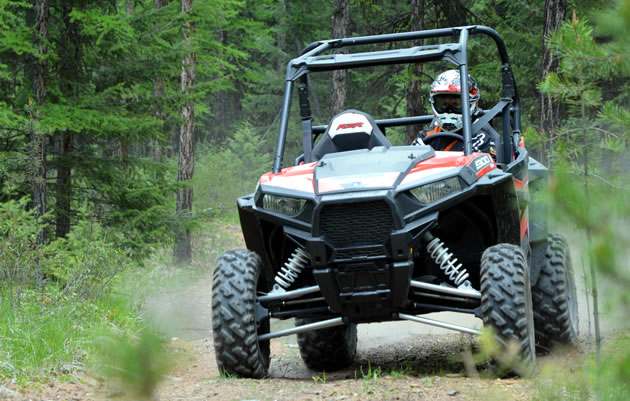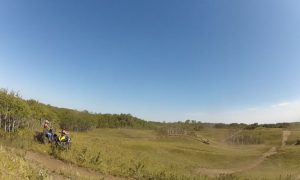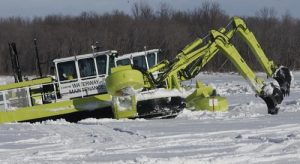Volunteers Building Bridges
This article shows the dedications and commitment of the Quad Squad of Alberta. Closing these ORV trails to ORV use is just not making any sense. I do agree that all ORV riders must be aware of their footprint and must learn to manage their riding areas responsibly.
One of the most important things we can do in the backcountry is to “Steer Clear of Water!” Using existing bridges wherever and whenever possible is one of the best ways to adopt more responsible practices when recreating in the backcountry. Luckily, local volunteers and organizations, such as the Crowsnest Pass Quad Squad, have invested time and money into providing these bridges for you!
On Saturday June 4, 2016, Outreach Assistants Rob, Thomas, and Ryan drove out to Blairmore for the 22nd Annual Ed Gregor Memorial Stewardship Day. They had been asked by Gary Clark, president of the Crowsnest Pass Quad Squad, to come out and assist with the decking of two new OHV bridges that spanned Gold Creek near the abandoned town of Lille.
Volunteers from the Crowsnest Pass Quad Squad and the finished OHV Bridge
The Oldman Watershed Council places a priority on engaging with a diverse range of stakeholders, and the Crowsnest Pass Quad Squad have proven to be terrific partners over the years. Gary Clark is a member of our newly formed Recreation Advisory Council (RAC), which is a group made up of OHV users that will help inform the OWC on how to educate OHV users on safe, appropriate, and sustainable motorized recreation.
Quad Squad Volunteers Secure Bridge Decking
These two new bridges will allow OHV users in the Gold Creek area to keep their machines out of the creek while exploring the area. This is particularly important since Gold Creek is critical habitat for our native, and threatened, West Slope Cutthroat Trout. In addition to the bridges, Mike Taje from Alberta Environment and Parks installed signs at the Gold Creek Crossings noting that Gold Creek is protected habitat for species at risk.
Rob Taylor, OWC Outreach Assistant (also extraordinaire), helps Mike Taje, Alberta Environment and Parks, install Species at Risk Signage at OHV crossings on Gold Creek
So … remember to keep those wheels out of water in order to protect our headwaters!
If you would like to donate or volunteer your time on upcoming projects like this please visit the Oldman Watershed Council’s website today!









 We had over 25 members attend. This session was a great start to learning what we as a club require and how to program and download maps as well as fine tuning our GPS to our personal needs. If anyone has any questions on their own GPS or would like any further information on how to use or buy a GPS to suit their needs, please contact Nick Lisney at Cabela’s. He will spend time in the store with anyone interested on a more personal level. Thank you for making our first event of this king a great success!
We had over 25 members attend. This session was a great start to learning what we as a club require and how to program and download maps as well as fine tuning our GPS to our personal needs. If anyone has any questions on their own GPS or would like any further information on how to use or buy a GPS to suit their needs, please contact Nick Lisney at Cabela’s. He will spend time in the store with anyone interested on a more personal level. Thank you for making our first event of this king a great success!

